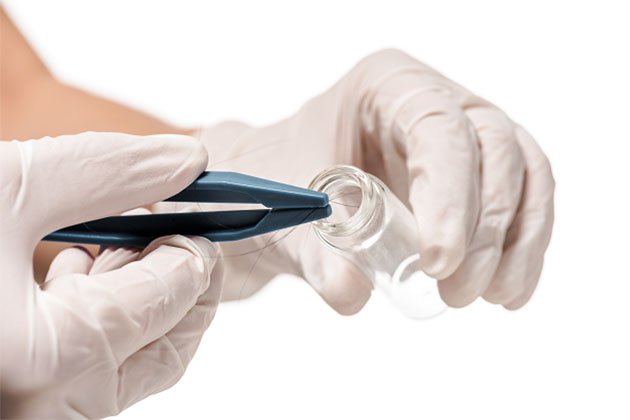Studie toont eerste stap in de richting van ontwikkeling van een test voor het meten van vitamine D-status uit haarmonsters
Meer dan 1 miljard mensen wereldwijd hebben een tekort aan vitamine D. Dit tekort heeft vooral invloed op de gezondheid van de botten en verhoogt ook het risico op hart- en vaatziekten. ziekte, suikerziekte, kanker enz. Vanwege deze implicatie is de beoordeling van vitamine D in de belangstelling komen te staan. Vitamine D wordt gemeten via a bloed Test which measures the concentration of best biomarker of Vitamin D in bloed called 25-hydroxyvitamin D (25(OH)D3). The bloed sample needs to be collected in hygienic conditions under trained medical personnel. This test is an accurate estimate but its biggest limitation is that it reflects status of Vitamin D at a single time point and does not account for high variability of Vitamin D thus requires frequent sampling. A single value may not be an ideal representation as Vitamine D levels could differ in our body depending upon season or other factors. The test is expensive and a cost burden especially in low-and-middle-income countries. But, because high proportion of population is now deficient in Vitamin D this bloed test is being increasingly requested.
Een studie gepubliceerd in Voedingsstoffen led by Trinity College, Dublin has shown for the first time that Vitamin D can be extracted and measured from human hair1. Authors themselves provided three hair samples for the study, two harvested from crown area of the scalp and one from beard, which were cut into 1cm length, weighed, washed and dried. 25(OH)D3 was extracted from these samples using the same procedure used to extract steroid hormones from hair2 in which a mathematical formula takes measured concentrations of the biomarker using Liquid chromatography-Mass Spectrometry (LC-MS) or Mass Spectrometry (MS) and provides an approximation of concentration in the hair. At the same time, bloed from all tissue samples was also analyzed using MS. Quantifiable concentrations of 25(OH)D3 present in both hair and beard samples were measured validating feasibility of such a measurement.
Human hair grows approximately 1 cm every month and Vitamin D is deposited to the hair continuously. More Vitamin D is deposited to hair when levels of Vitamin D in the bloed are high and less is deposited when they are low. A test which could measure vitamin levels from hair can tell us about Vitamin D status over a longer duration – several months at least taking into account seasonal differences. The longer one’s hair, more accurately status of Vitamin D can be measured, example several months to years and this could be treated as a long-term record.
This is an inexpensive, non-invasive method to capture Vitamin D status and can help medical professionals to maintain levels of Vitamin D concentrations in a person over time. The exact association between Vitamin D in bloed and in hair over a period of time needs further research as factors such as hair color, hair thickness and texture could affect Vitamin D in hair.
***
{U kunt de originele onderzoekspaper lezen door op de DOI-link hieronder in de lijst met geciteerde bron(nen) te klikken}
Bron (nen)
1. Zgaga L et al. 2019. 25-Hydroxyvitamine D-meting in mensenhaar: resultaten van een proof-of-concept-onderzoek. Voedingsstoffen. . 11 (2). http://dx.doi.org/10.3390/nu11020423
2. GaoW et al. 2016. Op LC-MS gebaseerde analyse van endogene steroïde hormonen in menselijk haar. J. Steroïde Biochem. mol. Biol. 162. https://doi.org/10.1016/j.jsbmb.2015.12.022






































